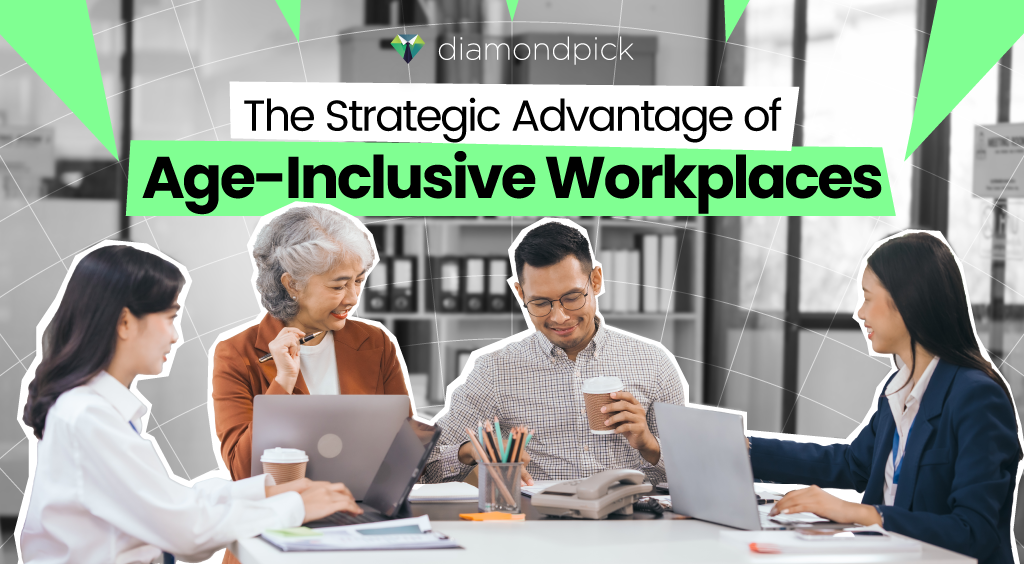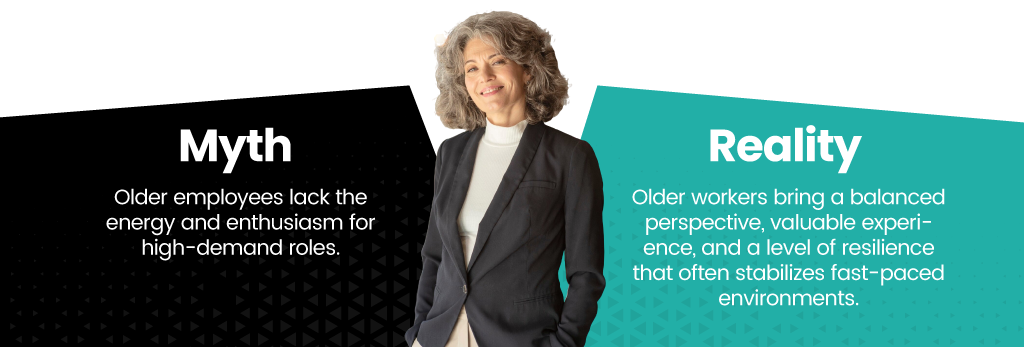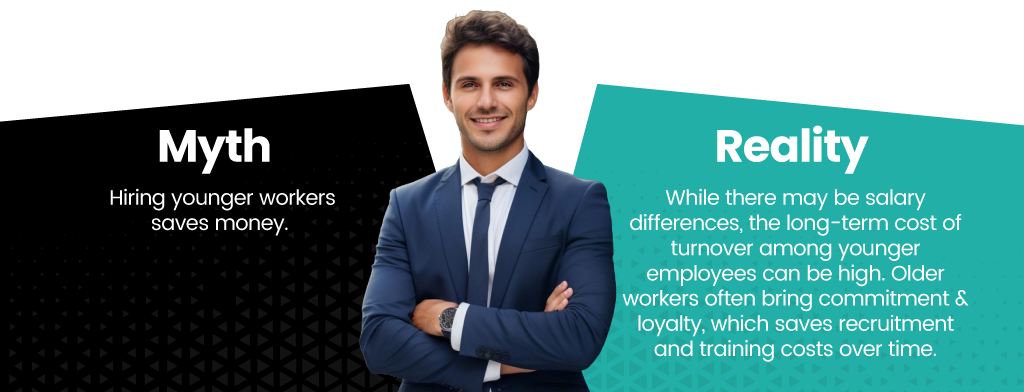
Despite mounting evidence that multi-generational workforces are more innovative, adaptable, and productive, myths and biases about older workers continue to limit opportunities for this invaluable talent pool. The result? Missed potential and talent left untapped. So, how can we break through these stereotypes and unlock the wealth of experience older employees bring?
Understanding Workplace Ageism
Ageism in hiring often springs from myths that cast older employees as less adaptable, lacking fresh ideas, technologically challenged, or resistant to change. Ageism can appear in many ways, such as employees being overlooked for promotions, excluded from projects, or encouraged to retire early. Ageism is obstructing the development of truly inclusive workplaces. Research shows that older employees frequently feel undervalued and face unique challenges in securing new job opportunities after a job loss.
However, these stereotypes often couldn’t be further from the truth. Research shows that age-diverse teams are more productive and perform better in complex problem-solving. Older employees often bring invaluable experience and institutional knowledge.

The Value of Age-Inclusive Workplaces
The benefits of age diversity are far-reaching. Age-inclusive workplaces are often more balanced, with older employees providing guidance, mentorship, and historical context that younger generations may lack. In age-diverse teams, decision-making often improves due to the varied perspectives at the table, making these teams better equipped to serve diverse customer bases and tackle complex issues.
Examples of companies already embracing this approach include IBM, where employees across generations collaborate in mentorship programs, and Deloitte, where the “Workplace Flexibility” initiative aims to meet the needs of employees at every life stage.

Creating a Culture That Welcomes All Ages
So how can organizations move from intent to action? Building an age-inclusive workplace starts with rethinking hiring, development, and cultural practices:
- Rethink Hiring Practices: Reword job descriptions to avoid ageist language like “high-energy” or “digital native.” Consider using skills-based assessments rather than relying solely on recent experience. Diverse candidate pools should be a priority.
- Design Cross-Generational Training Programs: Training programs that encourage cross-generational learning help both older and younger employees thrive. For example, pairing senior employees with younger “digital natives” can improve tech adoption among older employees while exposing younger team members to the expertise of their senior colleagues.
- Flexible Work Arrangements: Offering flexible hours, remote work options, and phased retirement can make it easier for older employees to stay engaged and productive. A flexible workplace isn’t just a perk—it’s a lifeline for talent retention across all ages.

Leveraging the Power of Mentorship and Knowledge Sharing
One of the most powerful tools for fostering an age-inclusive environment is mentorship. Older workers bring years of wisdom and industry insights that younger employees can learn from, while younger workers often bring fresh perspectives and tech-savvy skills that benefit their mentors. Here are a few ways organizations can foster this exchange:
- Reverse Mentorship Programs: Encourage younger employees to mentor older workers in areas like digital tools and social media, creating a two-way exchange of knowledge.
- Cross-Training Initiatives: Encourage employees from different age groups to collaborate on projects that require a blend of skills, experience, and perspectives. This can break down silos and create a more cohesive work environment.
- Recognition of Cross-Generational Teams: Highlight success stories of cross-generational teamwork within the organization to show the value of diversity and collaboration.

Looking Beyond the Numbers
Breaking the cycle of ageism in the workplace requires a shift in perspective. Older workers aren’t just experienced hands; they’re lifelong learners, mentors, and problem solvers. By addressing age-related biases and embracing generational diversity, organizations can build teams that are more innovative, balanced, and capable of tackling the challenges of a dynamic workforce.
